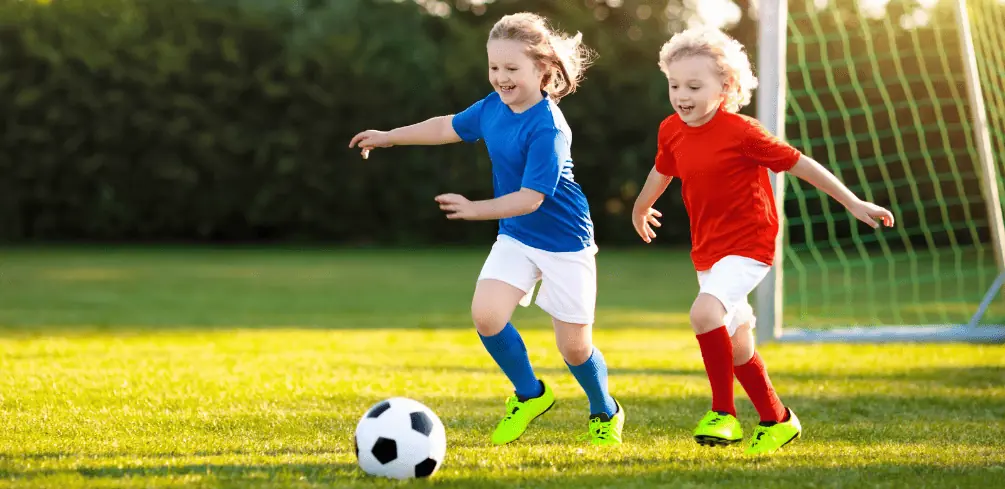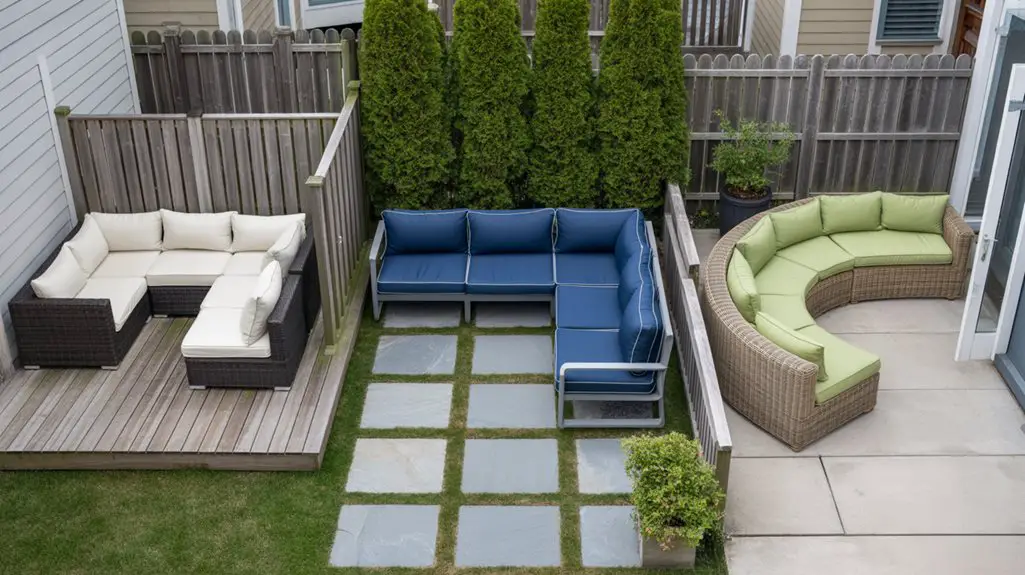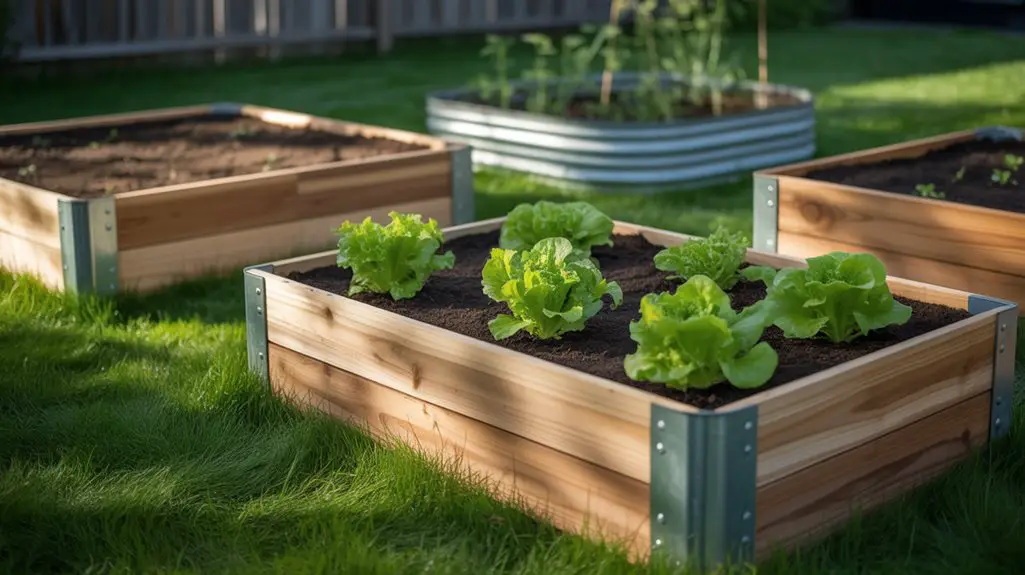Imagine this: It’s a warm, sunny day, and your kids are outside in the backyard practicing their soccer skills, laughing, and having fun.
You’ve successfully transformed your outdoor space into a mini soccer field where they can hone their abilities while enjoying fresh air and exercise.
Sounds perfect, right?
Well, with some careful planning and creativity, you can make this dream a reality.
In this article, we’ll explore various backyard soccer field ideas to help you create an exciting play area for both children and adults alike.
We’ll discuss choosing the right size and layout for your available space, selecting the ideal surface material for safe play, installing goals and boundaries to keep things organized, incorporating additional features for fun and training purposes, and tips on maintaining your home soccer field.
Choosing the Right Size and Layout
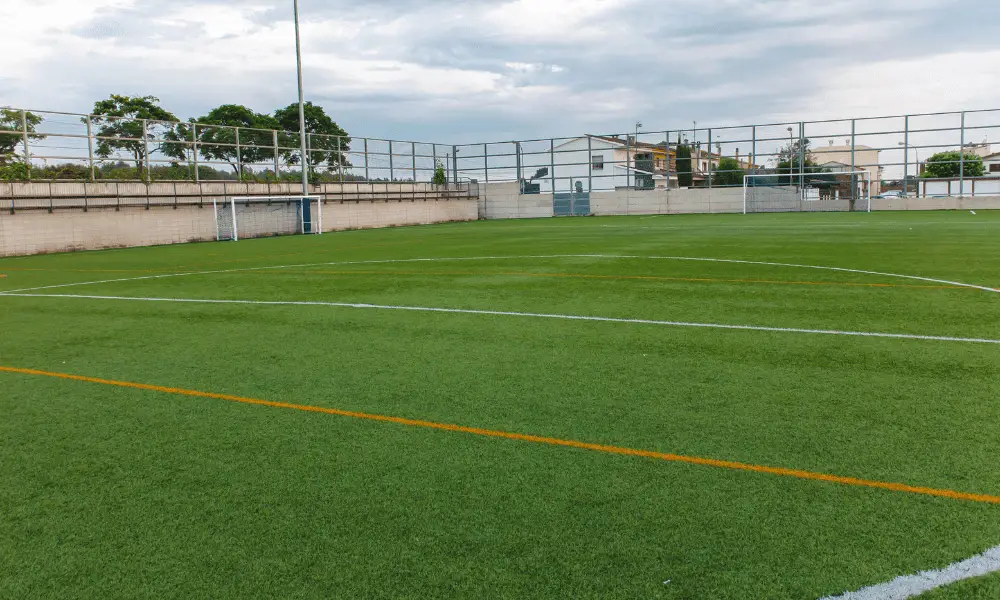
When it’s time to pick the perfect size and layout for your backyard soccer field, you’ll want to consider a few key factors to make it a hit with everyone.
Optimal dimensions are essential not only for creating an enjoyable playing experience but also for ensuring that space utilization is efficient and practical.
Think about the age group of players who will use the field most often, as well as any other activities or structures in your backyard that you may need to accommodate.
To determine the right size for your soccer field, take into account the number of players who will be participating in games regularly. If younger kids are going to play, a smaller field with scaled-down dimensions might be more suitable.
For example, U6-U8 age groups typically play on 30×20-yard fields, while U9-U10 can play on fields up to 60×40 yards. As players get older and more skilled, larger fields become necessary – standard adult-sized fields measure around 100×50 yards.
When deciding on your layout, remember that there should be enough space around the perimeter of the field for spectators and additional equipment like goals and benches.
Lastly, think about how you can creatively integrate your new soccer field into your existing backyard landscape without compromising its functionality or aesthetics.
Consider incorporating natural elements like trees or shrubs as boundary markers or using decorative fences to delineate the playing area from surrounding spaces.
You could also look at installing lighting systems that allow nighttime games while providing an attractive visual feature in their own right.
The key is striking a balance between fulfilling all practical requirements while still creating a visually appealing space where everyone enjoys spending time together playing soccer.
Selecting the Ideal Surface Material

Choosing the perfect surface material is like laying the foundation for a majestic palace, ensuring that your dream soccer oasis becomes a reality. The two main options you have to choose from are synthetic turf and natural grass.
Each has its own set of benefits and considerations, so it’s essential to weigh the pros and cons before making your decision.
Keep in mind factors such as maintenance, performance, safety, and aesthetics when evaluating each option. Synthetic turf benefits include low maintenance requirements, consistent playing conditions, and durability.
This artificial surface can withstand heavy use without requiring constant watering or mowing, as natural grass would demand. Plus, synthetic turf offers excellent drainage capabilities that minimize puddling during rainy seasons.
However, some drawbacks include higher upfront costs compared to natural grass installations and heat retention on hot days, which could affect player comfort levels.
On the other hand, natural grass considerations involve proper soil selection for optimal growth along with regular maintenance tasks such as watering, mowing, fertilizing, aerating, and pest control management.
As you make your decision between synthetic turf or natural grass for your backyard soccer field, remember this: the ideal surface material should cater to both your personal preferences and practical needs.
Consider how much time you’re willing to dedicate towards maintaining a pristine field, as well as how often it will be used by players throughout different weather conditions.
By carefully assessing these factors alongside synthetic turf benefits and natural grass considerations, you’ll be able to create an idyllic soccer haven right in your very own backyard!
Installing Goals and Boundaries
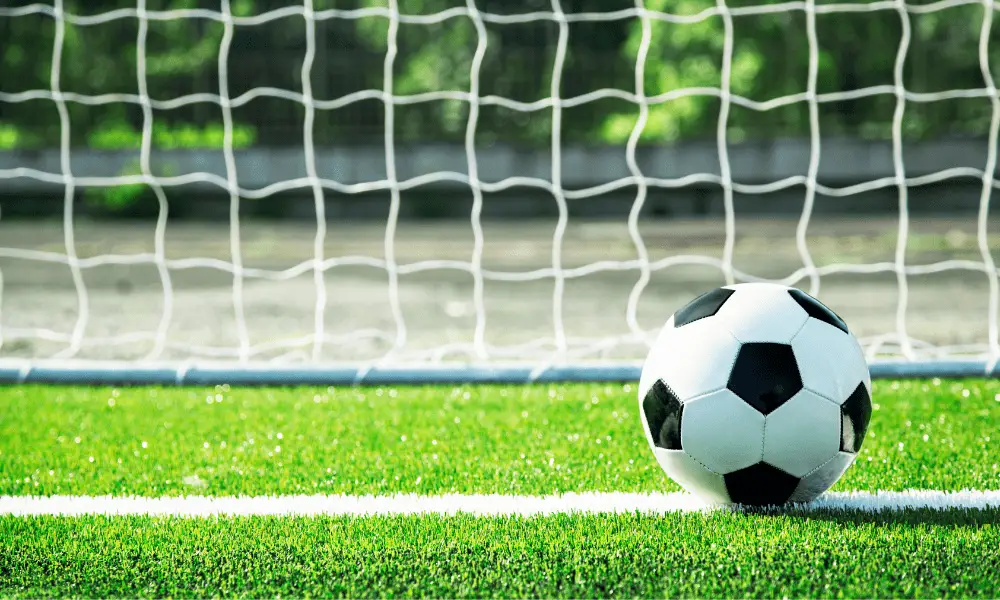
Once you’ve settled on the perfect surface, it’s time to bring your soccer sanctuary to life with well-defined goals and boundaries.
You’ll want to carefully consider goal durability and boundary aesthetics when setting up your backyard soccer field. To achieve this, you’ll need a balance of functionality and design that matches your vision for the ultimate at-home playing experience.
When selecting goals for your backyard soccer field, think about the following:
Now, let’s focus on establishing the boundaries of your soccer field. For a visually appealing look, consider using vibrant colored markers or painted lines. This not only enhances boundary aesthetics but also helps players easily distinguish between in-bounds and out-of-bounds areas.
If you prefer a more natural appearance, opt for low-profile landscape edgings such as stone borders or mulch paths around the perimeter of your field. Keep in mind that it’s essential to choose durable materials capable of withstanding regular wear from both foot traffic and ball impacts.
As you plan and install these elements into your backyard soccer field, remember that creating an inviting atmosphere is just as crucial as ensuring functionality.
By focusing on goal durability and boundary aesthetics, you’ll provide an engaging space where friends and family can gather together to enjoy their favorite sport while also adding value to your property through thoughtful landscaping choices.
Incorporating Additional Features for Fun and Training
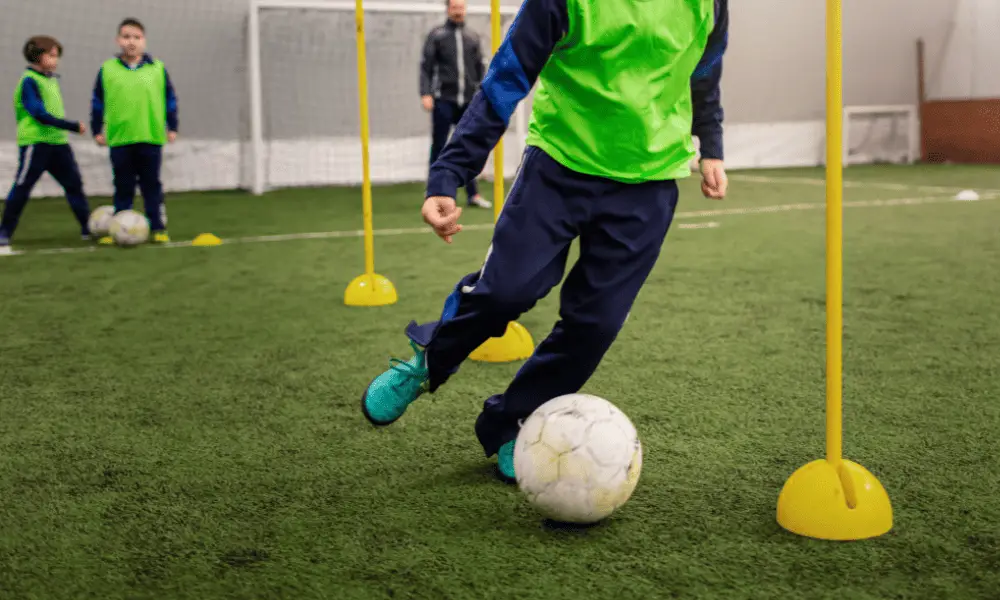
To elevate your game and make your at-home soccer experience even more enjoyable, consider incorporating additional features for both fun and training.
Obstacle courses and skill stations can be easily added to your backyard soccer field, providing endless hours of entertainment while also helping you improve your skills.
These additions can range from simple setups to more elaborate designs, depending on the size of your yard and the level of challenge you’re seeking. Consider setting up an obstacle course that includes various elements such as cones, hurdles, and agility ladders.
Skill stations could focus on specific aspects like dribbling, passing, or shooting. Use the table below for inspiration when designing your ideal backyard soccer field:
| Obstacle Course Element | Skill Station Focus | Equipment Needed |
|---|---|---|
| Cone slalom course | Dribbling accuracy | Cones or markers |
| Agility Ladder | Speed & footwork | Agility ladder |
| Hurdles | Jumping technique | Small hurdles or objects to jump over |
| Rings/Targets | Passing/Shooting Precision | Rings or targets placed around the field |
Adding these extra features to your backyard soccer field, not only will boost the fun factor but also give you a chance to practice new techniques and hone existing skills.
Remember that variety is key — mix up obstacles in different ways to keep things fresh and challenging.
As you progress through various drills at each skill station, watch how your newfound abilities translate onto the real pitch during games with friends or teammates.
So go ahead – get creative with your own unique backyard soccer setup and enjoy countless hours of exciting playtime while becoming a better player!
Maintaining Your Home Soccer Field

It’s essential to keep your home pitch in top shape, and maintaining it doesn’t have to be a chore! With a little bit of time and effort, you can ensure that your backyard soccer field remains the envy of the neighborhood.
By focusing on grass health and implementing effective irrigation systems, you’ll provide an excellent playing surface for both fun games and serious training sessions.
Grass Health:
Irrigation Systems:
With proper maintenance, not only will you enjoy hours of fun with family and friends, but you’ll also help preserve the longevity of your investment.
Your well-maintained soccer field will be ideal for enhancing skills while fostering camaraderie among players. Make sure to routinely check for any signs of wear or damage so that necessary repairs can be made promptly.
As seasons change, adapt accordingly by adjusting mowing schedules and watering practices to maintain optimal conditions year-round.
Remember – a beautiful backyard soccer field starts with diligent care!
Conclusion
In conclusion, creating a backyard soccer field can be an exciting and rewarding project for you and your family. With the right planning and dedication, you’ll have endless hours of fun and fitness at your fingertips.
Remember that 69% of parents say their kids don’t get enough exercise. So, by building a soccer field in your backyard, you’re not only fostering a love for the beautiful game but also promoting a healthier lifestyle for everyone involved.
Get creative, enjoy the process, and watch as your very own field of dreams comes to life!

